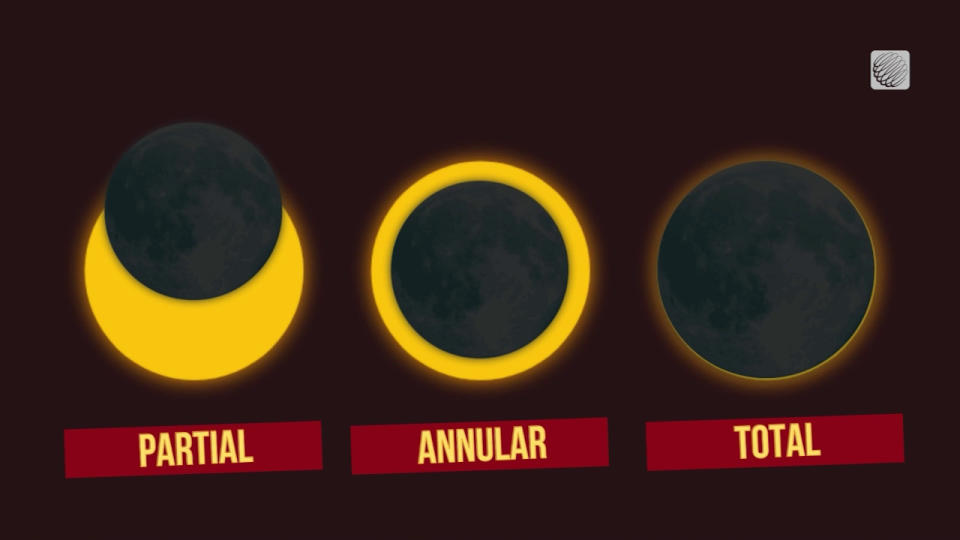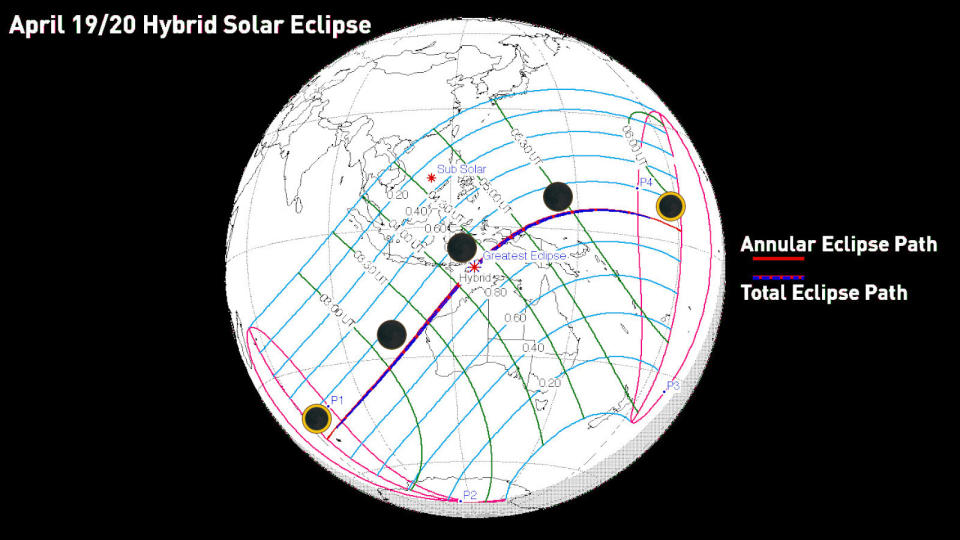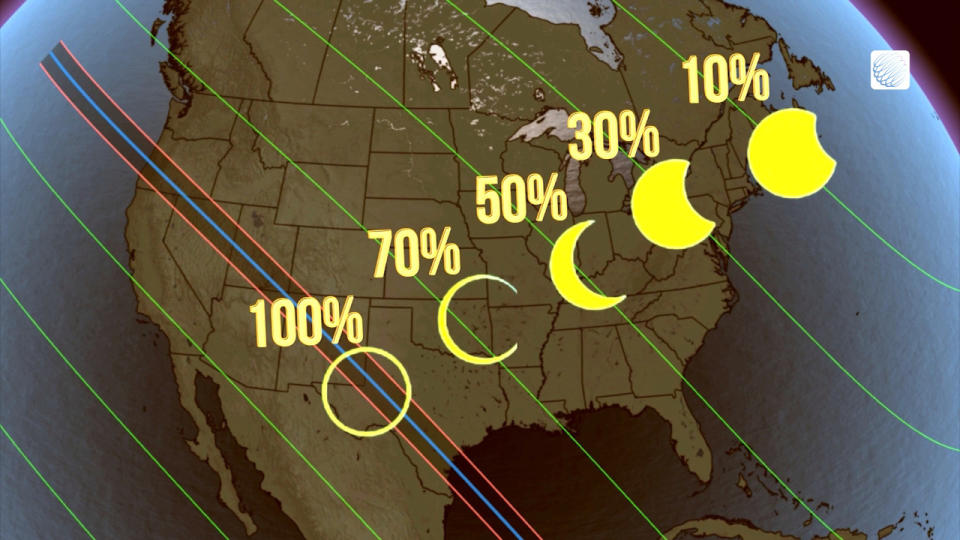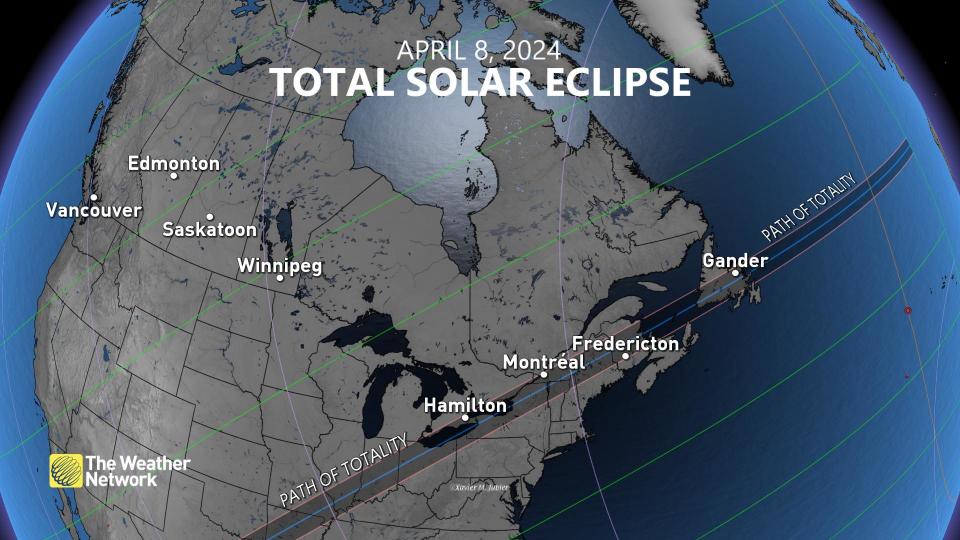A rare 'hybrid' solar eclipse occurs Wednesday night. Here's how to see it
On the night of April 19-20, observers along a line stretching from the Indian Ocean, across Australia and Indonesia, to the Pacific Ocean will witness a rare event as the Moon's shadow sweeps across the face of Earth in a 'hybrid' solar eclipse.
As the Sun, Moon, and Earth move through space, they occasionally line up just right to produce a solar eclipse, when the Moon passes between the Earth and Sun and its shadow is cast on Earth's surface.
Solar eclipses typically come in one of three basic forms:
Partial, when the Moon is slightly off-centre as it passes in front of the Sun, and thus only covers part of it,
Annular, when the Moon passes directly in front of the Sun, but due to being farther away from Earth in its orbit, it doesn't appear large enough to completely cover the Sun and thus leaves a 'ring of fire' around its edges, and
Total, when the Moon passes directly in front of the Sun, and it is close enough to Earth to completely cover the Sun's disk.

There's a rare fourth type, though.
Known as a hybrid annular-total solar eclipse, this occurs when the Moon is at just the right distance from Earth that when it passes in front of the Sun, it switches between a total and annular eclipse throughout the event.
In any typical year, we'll see at least two solar eclipses of some kind or another, spaced out about six months apart. Some years we'll be lucky enough to see a combination of three total and annular (like in 2038). From time to time we can see up to four partial eclipses in one year (like in 2011).
Hybrid eclipses occur more rarely, though. On average, of the 20+ eclipses that happen in any decade, one will be a hybrid. If they do bunch up, such as the two consecutive ones in October 1986 and then March 1987, the decades before and after (the 1970s and 1990s) get skipped. Since 2000, this is the third hybrid solar eclipse, after the April 2005 and November 2013 events. The next one will take place on November 14, 2031.
How to watch it from anywhere
This eclipse will not be directly visible from anywhere in Canada or from anywhere in the western hemisphere.
To see it as it happens, those of us on this side of the world will need to stay up late on Wednesday night and tune in to one of the various livestreams.
Watch below: Timeanddate.com's livestream of the hybrid solar eclipse begins at 9:30 p.m. EDT on Wednesday, April 19.
Read more: Planets dance amid eclipses and meteor showers this spring. Don't miss out!
What will happen?
When this eclipse starts, over the southern Indian Ocean at 9:34 p.m. EDT on April 19 (1:34 a.m. UTC on the 20th), those that happen to be in the path of greatest eclipse along that particular stretch of ocean will see an annular "ring of fire" solar eclipse.
The Moon will then quickly cover up the entire disk of the Sun, turning the event into a total solar eclipse as the shadow sweeps to the northeast. It will cross the southwestern Indian Ocean and the western tip of Australia before peaking over Indonesia at 12:16 a.m. EDT on the 20th (4:16 UTC).

This graphic shows the path of the Moon's shadow during the April 20 hybrid solar eclipse, highlighting the regions where it will be visible as annular and total. Credit: NASA/Fred Espenak/Scott Sutherland
It will then pass over the western Pacific, and with just minutes left, the edges of the Sun's disk will creep around the limbs of the Moon again, presenting the ring of fire once more before the event ends at 2:59 a.m. EDT (6:59 UTC).
Observers not along the path of greatest eclipse will instead see a partial solar eclipse during the event. How much of the Sun is covered up by the Moon depends on how far the observer is from the path of greatest eclipse.
For example, skywatchers Melbourne and Sydney, Australia, will only see around 20 per cent of the Sun covered by the Moon. Observers in Perth, on the other hand, will see over 80 per cent of the Sun blocked by the Moon.
When is the next solar eclipse?
After the April 19/20 solar eclipse, there are two special ones for those of us in North America.
On October 14, 2023, an annular solar eclipse will be visible across the southwestern United States. The rest of the country and Canada will see a partial solar eclipse during the event.

Then, on April 8, 2024, a total solar eclipse will pass over southern Ontario, southern Quebec, and the Maritimes.
There are a few locations lucky enough to be directly in line of the eclipse path of totality, such as Hamilton, the Niagara Peninsula, Kingston, Cornwall, the southern half of Montreal, Sherbrooke, Fredericton, and Gander. Along that path, the Moon will completely cover the Sun during the event.

Additionally, millions more people are within a reasonable distance of that path. This includes much of southwestern Ontario (Windsor, London, Kitchener-Waterloo, Guelph), the entire Greater Toronto Area, Ottawa, the northern half of Montreal, Quebec city and the communities along the St. Lawrence River, Saint John, Moncton, Charlottetown, Sydney, and St. John's.
There hasn't been a total solar eclipse visible from a major Canadian city since Feb 26, 1979, when the Moon's shadow passed directly over Winnipeg. In all likelihood, there has never been a total solar eclipse, so far, that was visible to as many Canadians as the April 8, 2024 event will potentially be.
The closest, perhaps, was the January 24, 1925 solar eclipse, with a path of totality passing over the largest cities and towns in southern Ontario. However, their populations would have been far smaller in those days.

